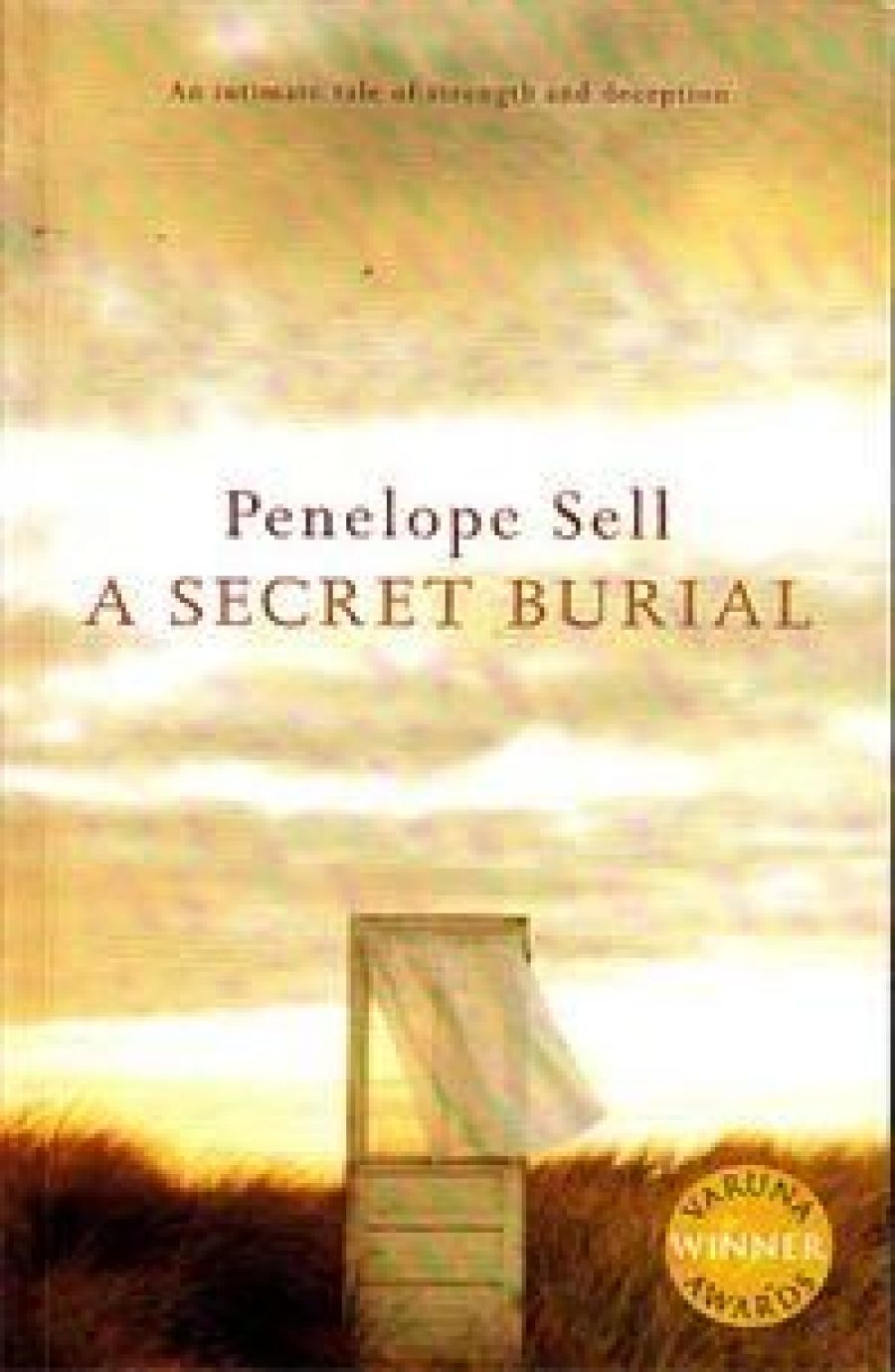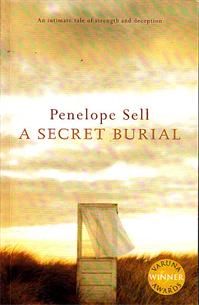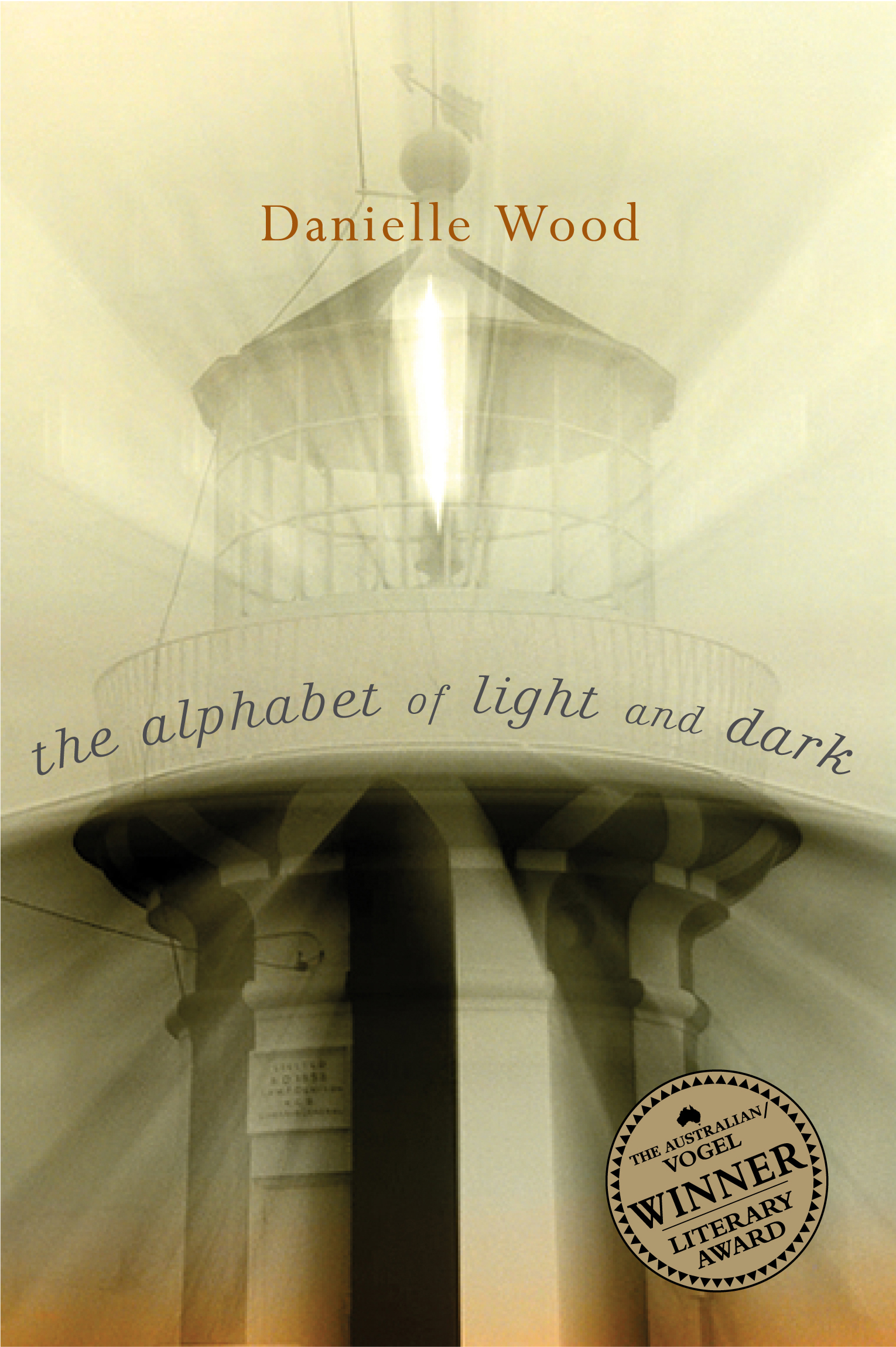
- Free Article: No
- Contents Category: Fiction
- Review Article: Yes
- Article Title: A Social Pulse
- Online Only: No
- Custom Highlight Text:
The bush gothic of Barbara Baynton shapes the world of this promising first novel from Penelope Sell. The Secret Burial deals with the brutal coming of age of fifteen-year-old Elise. The setting is a harsh, drought-stricken rural environment where people, fauna and the environment are barely surviving. Elise is catapulted into adulthood by the accidental death of her alcoholic mother, Lizzie, who electrocutes herself when drunkenly trying to repair the washing machine. Afraid that she and her younger brother, Jeremy, will be separated, Elise asks her old neigh-bour, Isaac, to help her bury her mother and tell no one.
- Book 1 Title: The Secret Burial
- Book 1 Biblio: Flamingo, $21.95 pb, 251 pp
- Book 1 Cover Small (400 x 600):

- Book 1 Cover (800 x 1200):

- Book 2 Title: The Alphabet of Light and Dark
- Book 2 Biblio: Allen & Unwin, $21.95 pb, 359 pp
- Book 2 Cover Small (400 x 600):

- Book 2 Cover (800 x 1200):

The plot unfolds around Elise’s determination to guard this secret and manage alone. The dominant motif is entropy as everything falls apart. The centre provided by Lizzie was never secure – Elise is bitter that, before her mother’s death, she has taken so much responsibility – but Lizzie was nominally the adult. Now there is no buffer at all. Elise tries to be a mother to a defiant Jeremy, who is shaken at Lizzie’s sudden disappearance. The roof of the long neglected house is collapsing and the vegetable garden dying. Elise begins to dress in her mother’s clothes, moves into her bedroom and undertakes full responsibility for Jeremy. She tries to find a job but the drought-ravaged town is in severe decline.
Although sympathetic to the children, Isaac is an outsider who accepts Elise’s decision to go at it alone. Wondering about Elise’s absence, her schoolteacher unexpectedly visits, but does not directly intervene because the children guard their secret so closely. There are two troubling neighbours: Ruby has dementia, and Ron is abusive to her. He also takes a prurient interest in Elise, asking prying questions about her mother. There is a surreal menace in the Fisher household, especially when the semi-deranged Ruby flits shrieking through the bush at night. Gary, a predatory labourer at the Fisher farm, introduces Elise to sexual experience. Although unready for this, she complies, presumably to complete her unconscious identification with Lizzie. Elise even begins to drink whisky and lies in her empty grave.
Sell’s is a straightforward chronological narrative, focalised through Elise and dense with imagery, some of it biblical and some of it sexual. There is the hermit figure, Isaac, the apple tree under which Lizzie is buried, the crow that haunts the grave and the Bible reading that Elise undertakes. This contributes to a sense of the apocalyptic, which culminates in a devastating flash flood. Elise returns to salvage what she can and encounters a snake amongst her mother’s sodden clothes.
This is a bush world stripped of romanticism and marked by suffering, especially that of women. It is unremittingly bleak as Elise is threatened on every front: the sexual, the economic and the psychological. Her secret discovered and Jeremy lost to the authorities, Elise must relinquish the vestiges of her childhood and accept a perilous future in the city.
Danielle Wood’s The Alphabet of Light and Dark, a first novel and this year’s Vogel Award Winner, is a multi-layered work. In the ‘now’ of the narrative, there are two main characters – Essie and Pete – whose points of view alternate. The story of each character remains separate until they meet at the lighthouse on Bruny Island, where each has come to live. One day, they pass each other on the path in front of the lighthouse; each recognises the other as someone they knew as a child.
Essie has taken leave from her work in Perth as an oceanographer to attend the funeral of her beloved maternal grandfather. She has come to the lighthouse to write a fictional family history in an attempt to deal with her grief. Because she once lived on Bruny, Essie is also now mourning the death of her mother when she was a little girl. Pete is the light-house caretaker who is still hurt by the end of his relationship with Caroline. He is waiting to hear whether he can return to Macquarie Island, where he is employed to eradicate feral cats. In the meantime, he constructs metal sculptures.
Essie’s way of managing her pain is to write the stories of her past. This writing (indicated by italics) introduces other time frames and points of view in the narrative:
The only way to find them is to keep threading together those strands of words on the pages of her blue notebook. To search between the lines of these stories of loss and wanting to find, if not the truth, then perhaps the essence of things. To write, if nothing else is possible, someone else’s memories of their own mother.
In Essie’s story, her grandfather’s aunt, the tragic Alva, the lighthouse keeper’s daughter, is central. Essie often returns to a postcard image of the white-haired Alva as she imagines her life and gives her a voice. So associated with death is Alva that her grief-stricken ‘mother’ Lydia (really her grandmother) says of Alva: ‘Death follows that child, hovering at her shoulder’.
This novel undertakes a great deal. Its themes are large and tragic, but it ends on a note of cautious optimism. Wood deftly interweaves a history of European migration to Tasmania in the nineteenth century, the recollection of a Scottish homeland and a concern with seafaring and oceans with questions of conservation, death and loss. There is also a strong interest in Tasmanian Aborigines and their tragic past and continuing presence. Pete is Aboriginal and white bigotry is rife in contemporary Tasmania. In the local pub, he listens to the following conversation:
‘Wish I had a lick of the fucken tar brush, I tell you. Never have to do another day’s work in me fucken life!’
It’s a young fisherman with windblown cheeks and a scrappy reddish beard … Pete reminds himself that this is why he comes here, to listen to wankers like this one. It’s like taking a social pulse.
The Alphabet of Light and Dark belongs to the now well-established Tasmanian genre best exemplified by Richard Flanagan’s Death of a River Guide. The light and dark imagery of the lighthouse beacon, the motif of flaxen hair and the mermaid story link the generations in a delicate poetic network. It is successful in what it sets out to do, but there were moments when less might have been more. Essie and Pete interested me most; I became impatient for the narrative to return to them. This is an impressive first novel, powerfully informed and beautifully written.


Comments powered by CComment